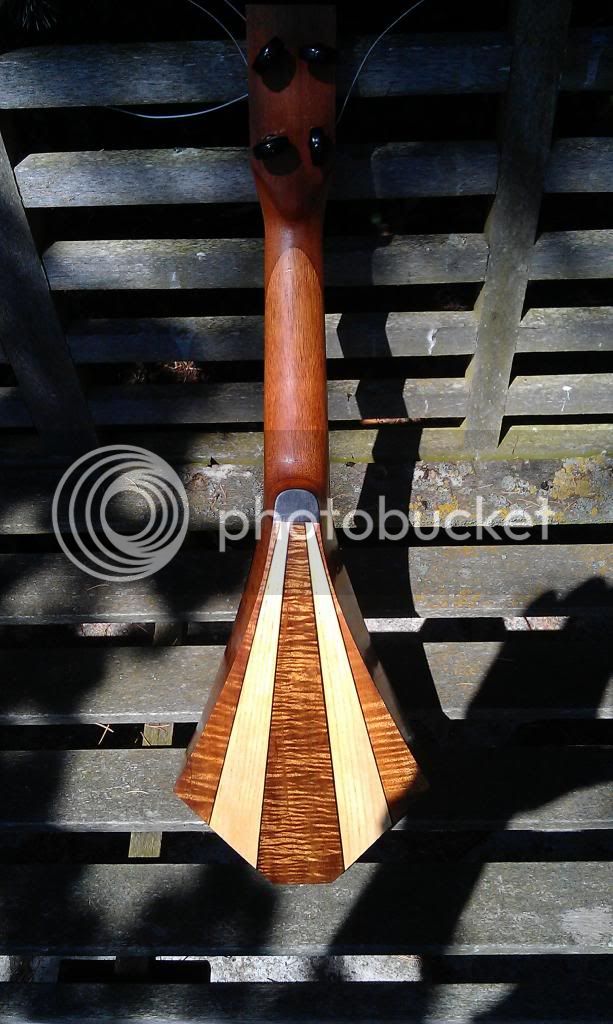Chris raises some good points.
Personally I'd go a bit careful running a scraper down a steel rule, okay on a cheap metal rule but you don't want to use your best engineer's rule or a good straight edge. Some blades and scrapers are hard enough to take a shaving from the ruler's edge!
His point about ABS instead of the more traditional Ebony is a good one. Even with a sharp scraper or plane Ebony gives off a really fine dust that gets into the grain of pale woods like Holly or Sycamore and is a pig to get out. If I'm forced to do it I'll always lay down a few grain filling coats of blonde shellac on the pale timber so the Ebony dust can be wiped safely away.
Here's a way to thickness inlay strings and add a slight taper, you hold the end of the inlay with a finger and run the heel of the block plane on the bench.
Here's some Sycamore stringing taken down to 1mm. I don't want to give the wrong impression, you thickness to fit the groove, not to hit a specific number. By the way, these cheap plastic callipers are great for day to day workshop use, I keep the expensive Starrett callipers for special jobs and have these in an apron pocket.
To mitre the ends of inlay at 45 degrees you look for a 90 degree reflection in the back of chisel, then push down vertically on the chisel.
With a bit of practise you can do it bang on, time after time,
To mitre to length you keep a bit of scrap 6mm or 9mm MDF, position the stringing in the groove, glued at one end, and mark for the other end. Slip the MDF under the stringing and use the chisel trick to cut the mitre a whisker over length. Check again for length and then creep back on the cut with successive mitre cuts until it drops in to the groove perfectly.
Good luck!










































